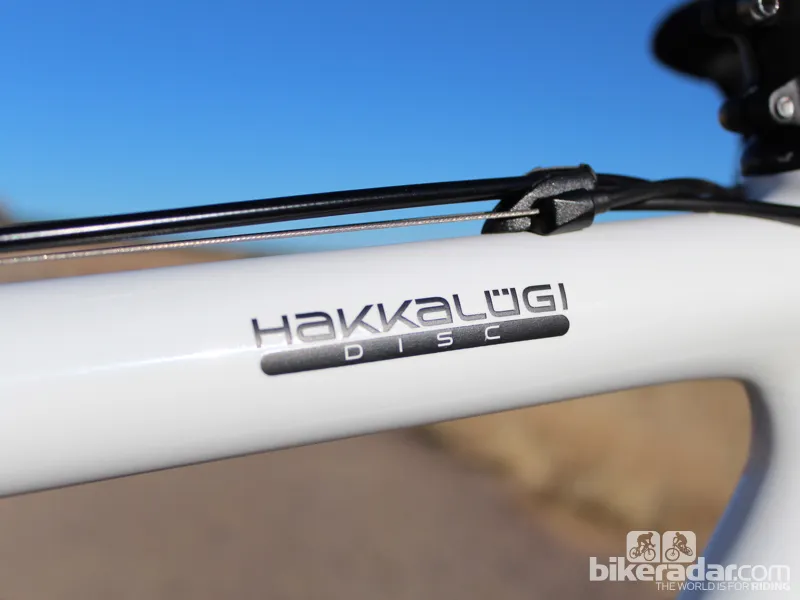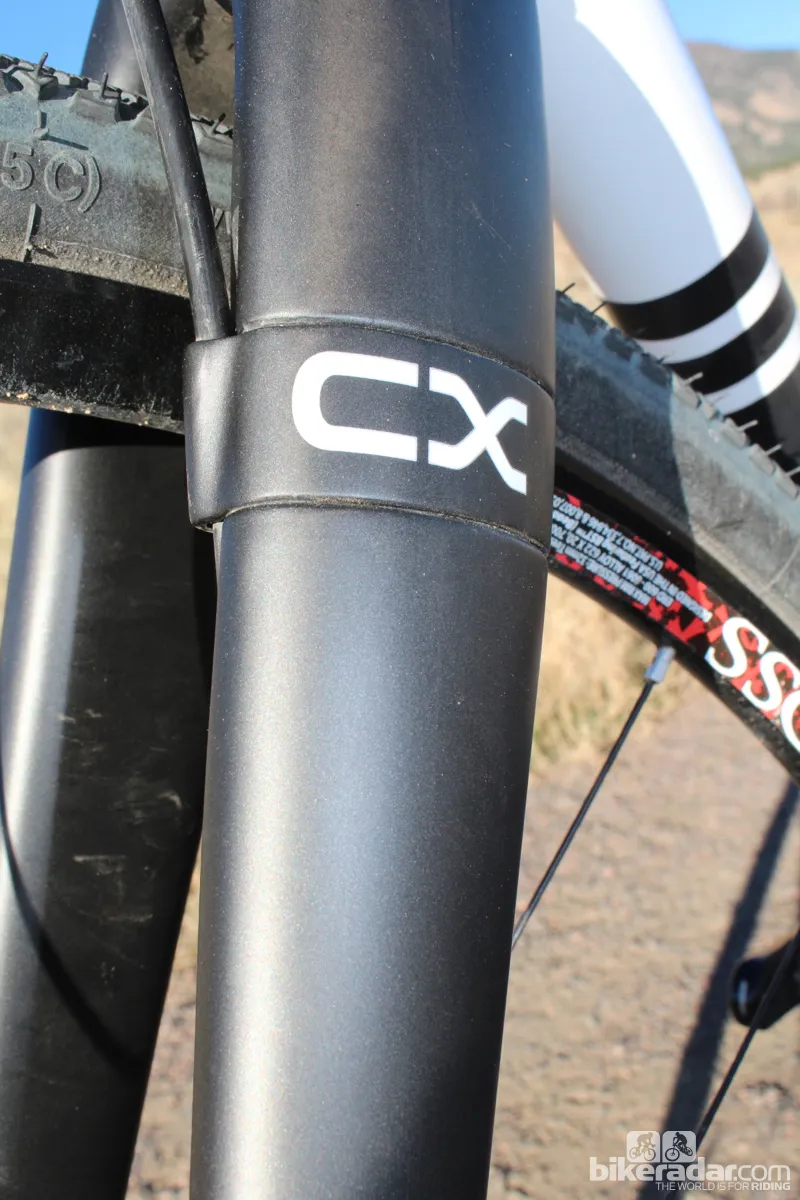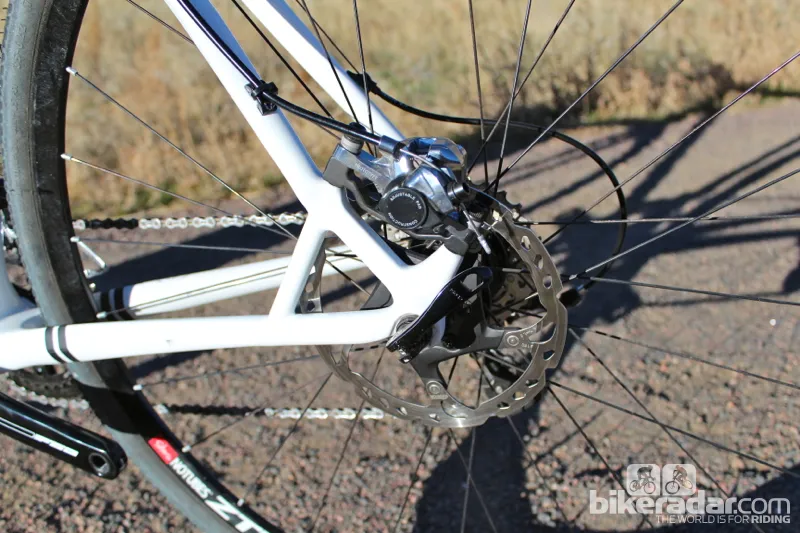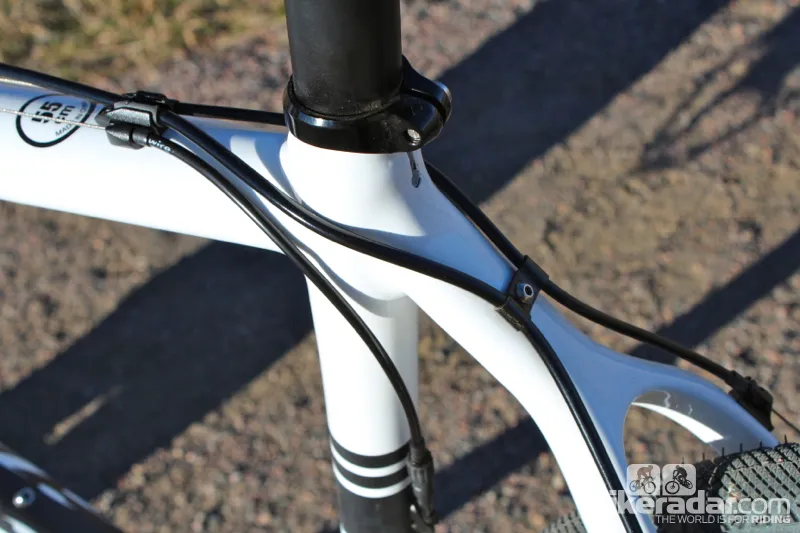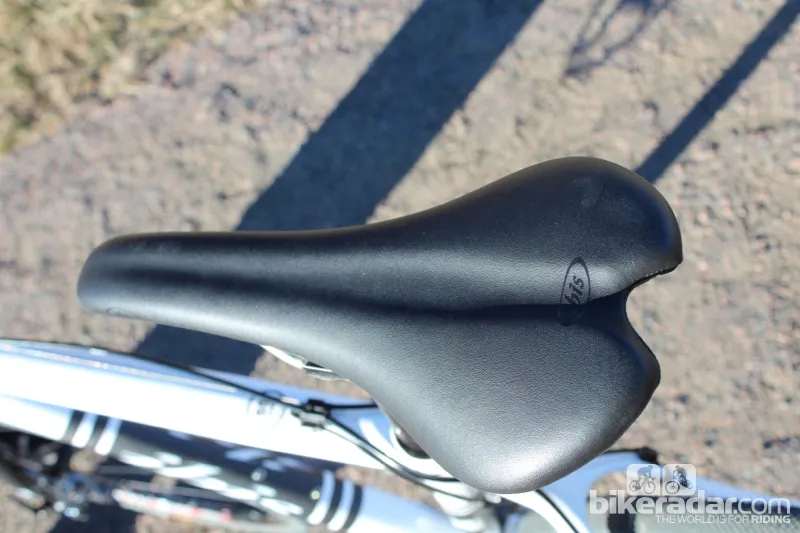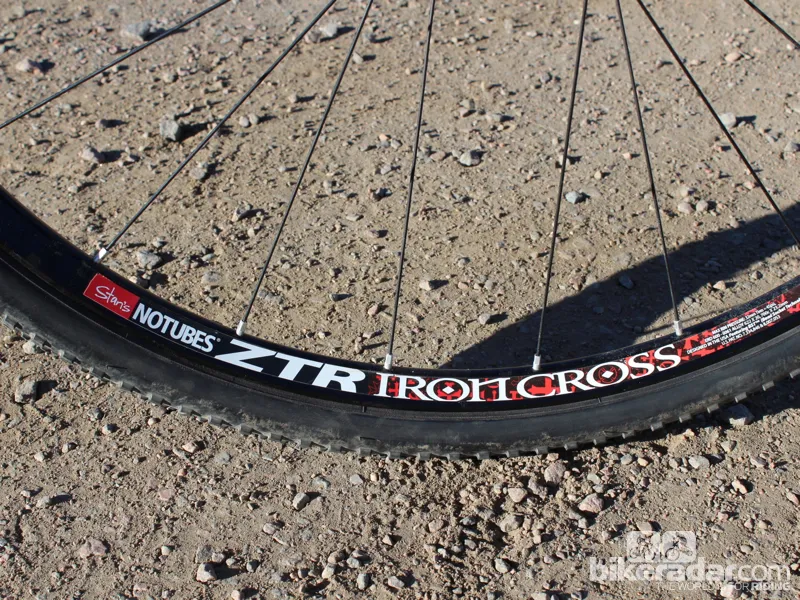Ibis introduced the Disc version of the Hakkalügi in October 2012, with a slightly lower bottom bracket and a shorter head tube than the original. Gone is the ‘Hand Job’ cable stop, but many fun details remain. From the quirky emblem upwards (the Lion of Flanders coughing up phlegm) the bike features spec and geometry choices that feel right for cyclocross.
Ride & handling: Quick and snappy
The Hakkalügi Disc is a fun bike to ride. The stiff frame and light wheels combine for gratifying acceleration, and the Shimano Ultegra levers and calipers team up for solid, well-modulated braking. Lever feel is nice and firm. The Stan’s NoTubes ZTR Iron Cross wheels aren’t the stiffest under acceleration, but they stayed trued throughout our rough-and-tumble testing.
A lower bottom bracket (70mm) makes for a low and stable, centered-between-the-wheels ride. This low center of gravity helped navigate fast turns with confidence. On steep off-camber sections, however, we did occasionally clip a pedal as it bottomed out on the ground. The ENVE CX Disc fork is confidence-inspiring, and the handling is stable but not sluggish.
There is a weight penalty with the disc brakes, but compared to some other bikes we tested, the Hakkalügi weighed in at a respectable 8.09kg/17.8lbs. Because of the relatively light hoops, the Ibis cranked right up to speed out of corners.
For that weight penalty of extra metal with discs and calipers, you gain some power and, perhaps more importantly, better modulation. For example, on one grassy course we were following a racer with mini-V brakes who repeatedly locked his rear and slid a bit on a tight downhill corner. We were able to brake later into that turn, yet keep full traction.
The sloping top tube lends a modern look, but also means you have to reach a bit on dismounts. For this, we would prefer a straight top tube.
Frame: Airtight carbon, but sizing may be an issue
The carbon frame on our 55cm test bike weighed in at 1,120g. Ibis sells six sizes, from 47 to 61cm, but it’s somewhat unusual to have a 55 to 58cm gap. This could leave a number of riders – including a couple of our testers – missing their 56 or 57cm sweet spot.
Fighting the trend of internal routing, Ibis keeps all the cables outside the frame. “’Cross bikes get muddy,” said Ibis founder Scot Nicol. “And we've found it's easier to service external cables.”
Mud clearance at the fork and seat stays is good — enough to slide a fat finger all the way around the tire. At the chainstays, however, clearance between the sidewalls and the frame is pinched down to less than 1cm, but the space in front of the tire remains a generous 2.5cm. The design seems to be a good compromise between mud clearance and lateral rigidity.

The head tube tapers from 1 1/8in to 1 1/2in
Compression molded carbon dropouts up the bling factor and lower the weight, while beefy tubes built around a BB86 press-fit bottom bracket and a 1 1/8in to 1 1/2in steerer tube offer plenty of lateral stiffness.
Equipment: Interesting choices, including yours
Ibis can build up bikes the way your local shop can, swapping in a wider bar or longer stem to suit the rider. Our 55cm test bike, for example, came with a 44cm bar. The stem, bar and zero-setback seatpost are all Ibis house brand aluminum.
The Stan’s ZTR Iron Cross tubeless wheels came with Specialized Tracer clincher tires – and road tubes. “There aren't enough tubeless 'cross tire choices out there right now, and the ones that are tend to have really aggressive tread patterns,” Nicol explained. “We thought that using a faster rolling/lighter tube tire was a better way to go for an all-round setup.”

Specialized's 33mm Tracer clincher measures a plump 34.4mm on the Stan's ZTR rims
We flatted the road tubes pretty quickly and replaced them with standard cyclocross tubes, at which point we had no further issues, even at relatively low pressures ( 30psi for a 190lb riders). And, of course, you can run Stan’s tubeless too.
The Specialized Tracer tires have a consistent profile that some testers found could drift predictably. For racing in dry and often dusty conditions, we found the traction to be spot on. Also, the casings have plenty of give for a clincher. The tightly spaced knobs do pack with mud pretty quickly. But the beauty of the Stan's wheels, of course, is that you can swap tires to suit the conditions, if you like.
The Stan’s ZTR Iron Cross wheels are light. With tubeless tape and valve stems installed, our test wheelset tipped the scales at 685g for the front wheel and 805g for the rear. Plus, the wide rim makes for a wide tire. With a 23mm external/20mm internal rim, the 33mm Specialized Tracer plumps up to 34.4mm. (A 23mm Zipp Tangente tire measures 26.2mm on this rim.) You can really feel the extra volume, and can run lower pressure because of it.
Ibis choose the zero-setback post as a shock absorber. By slamming the saddle back you can get a nice bit of flex, Nicol says. We can’t comment on that as we had to swap in an offset post to get the bike to fit.
Finally, the Shimano Ultegra levers on the bars are complemented by Shimano CX-75 calipers at the hubs. Like most cyclocross disc bikes now, the Hakkalügi has 160mm front and 140mm rear rotors. We most enjoyed this setup on fast, bumpy courses that required hard braking into corners. We found we could brake later – and more effectively – than competitors on cantilever bikes. And unlike on some canti bikes – especially those with carbon rims – there was no hand fatigue from repeated hard braking.
Are disc brakes more grabby than cantilevers? No. We just found them to be a bit stronger, and much easier to modulate.

Shimano's CX-75 calipers on the Hakkalügi Disc

